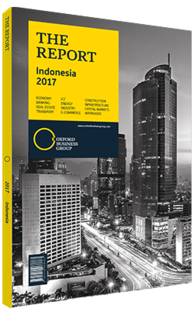Hadi Wenas, CEO, MatahariMall.com: Interview

Interview: Hadi Wenas
What is the potential for the growth of the e-commerce industry in Indonesia?
HADI WENAS: E-commerce, excluding travel, is expected to grow by at least 14 times, from $1.1bn at the end of 2014 to $15.6bn by the end of 2020. A bottom-up analysis undertaken by a management consulting company at the end of 2015 has highlighted that there are four main drivers behind this projection.
First, with 50% of people under 30 years old, Indonesia’s population is very young, with very different consumer behaviours. For example, 40% of all transactions are made by the below-25 age group, and 40% are made by those aged 25 to 34. However, in terms of sector revenues, the 25 to 34 age group contributes around 50%, while those aged below 25 contribute less, as they are discount hunters.
Second, the retail sector is forecast to grow. Overall, sector growth reached 8% in 2015, for a total of Rp338bn ($24.7m). Third, internet penetration and smartphone penetration is also rising. Indonesia currently has 64m internet subscribers, with a growth rate of 14%, and 88m smartphone users, expanding at 19%. Right now, smartphone penetration is outgrowing laptop penetration. While 80% of online shopping outside Java is done through smartphones, in Java it is still predominantly accessed through desktops. The growth of smartphones will not slow down, as cheaper models are becoming increasingly available. Lastly, the government’s focus on infrastructure projects will translate into faster delivery, higher volumes and cheaper costs. This means e-commerce penetration in the retail sector is projected to grow from 0.7% at the end of 2014 to 3% by the end of 2020.
The projection is indeed conservative if we look at the historical growth in other markets, such as China, where e-commerce grew by 25 times from 2008 to 2014. Multiple sectors, such as consumer retail, payments, shipping and small and medium-sized enterprises (SMEs), are benefitting directly from e-commerce growth in Indonesia. SMEs have been the backbone of Indonesia’s economy over the last decade or so, and we are confident that e-commerce will be able to induce further growth and extend the reach of these SMEs. Other than deliveries, which will be improved by the infrastructure projects, Indonesia’s biggest bottleneck is payments. The government is pushing for one electronic payment system, which is necessary to protect the integrity of the domestic system. The government wants to make sure that digital wallets are transferable from bank to bank, which is not the case now. There is room for all players at the moment. E-commerce is still a retail business, it is just a different channel for commerce. To understanding consumer behaviour we need to see the offline business. In the retail sector as a whole, there is room for two big players and several small ones, and that will also apply to e-commerce.
To what extent does Indonesia’s geography affect the expansion of e-commerce?
WENAS: Because Indonesia has over 17,000 islands, it offers unique challenges and opportunities for e-commerce. The main challenge is to make online services more complementary to offline offerings. Being an island nation means that e-commerce growth can be higher here than in other countries. It is very expensive to build malls in remote areas of Indonesia, and it is cheaper to send goods when there is a demand. In terms of logistics, areas outside of Java have fewer new goods, and people in remote areas don’t always have the goods they want, so e-commerce brings access to those products. Accessibility is not a problem, instead the difficulties lie in logistics. Lack of planning when it comes to addresses is a problem, as is traceability and speed of delivery. Couriers are lacking in digitalisation, and there is no three-plus status tracking system to increase traceability. They need to invest more in modernising.
You have reached the limit of premium articles you can view for free.
Choose from the options below to purchase print or digital editions of our Reports. You can also purchase a website subscription giving you unlimited access to all of our Reports online for 12 months.
If you have already purchased this Report or have a website subscription, please login to continue.

